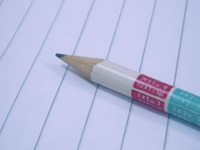Why Singapore’s English Teachers Should Embrace Singlish, Not Fight It
Is it time for Singaporean educators to embrace Singlish as a legitimate learning tool? What the Research […]
Read More
Chinese teachers from Compassvale Secondary School step out of their comfort zone in order to improve their students’ formal letter writing and oral skills.
 Good teachers urge students to go beyond the limits of what they think they can accomplish. But there’re some who go even further by challenging themselves to step out of their comfort zone, just so that their students ultimately benefit.
Good teachers urge students to go beyond the limits of what they think they can accomplish. But there’re some who go even further by challenging themselves to step out of their comfort zone, just so that their students ultimately benefit.
Together with other teachers from the Chinese Language (CL) department at Compassvale Secondary, Ms Lim Puay Ee, 33, and Ms Leow Deng Li, 26, ventured into the heretofore unfamiliar world of action research (AR).
They wanted to find out if the changes they were making to the curriculum were indeed benefiting their students, and to what extent.
The CL department zoomed in on two aspects of the Chinese curriculum: formal letter writing and oral skills.
For the former, the CL teachers gathered to discuss the situation in 2005 and found that Secondary 3 students are still not proficient in formal letter writing. Also, teachers have been using different teaching methods in Secondary 2 classes. They decided that the way to go is to start students early on formal letters, and to guide them step-by-step using a uniform and structured method.
Three Secondary 1 classes of differing CL proficiency were chosen for this project and results from pre- and post-tests were, as Ms Lim cheerfully put it, “remarkable”.
Next up on their list was the oral communication skills of Secondary 4 students. With the increased emphasis on the conversational component in the oral exam, teachers wanted to better prepare their graduating students who were “going for the battle” of O Levels in 2006.
Students were each given a question about a current issue or “hot” topic and after researching, they gave a presentation to the whole class. During those sessions, teachers and students alike would give the presenters feedback, and also throw in a few impromptu questions. “This kind of skill is a lifelong thing,” says Ms Lim, as students learned how to improve their conversational skills as well as to mentally organise and structure the content they were presenting.
The additional training that the students received was reflected in their oral exam results: 70 of them scored distinctions, compared to 42 in the previous year.
Such encouraging findings validate the effort and time teachers spent on AR. Says Ms Leow: “After you’ve gathered all the data, what is the result? Is our effort going down the drain, or is improvement really in sight? That is the really exciting part.”
But taking the initial plunge into AR wasn’t the easiest thing for these language teachers who were not trained in research.
“I must say that data collection was one of the difficult parts,” Ms Leow recalled. “When it comes to analysis, what we want to get (out) from the data is the part where we really have to think hard, and whether what we’re doing is correct. All of us were very worried.”
As CL teachers, their lingua franca is naturally, Chinese. “Whatever we’re thinking or teaching is in Chinese, and to translate them into English is something quite daunting,” admitted Ms Lim. Still, they gamely took up the challenge of writing their research reports in English, as did all the other subjects departments who were also involved in AR. In fact, the school published a book of their research reports based on AR projects done in 2005 (Chew, 2006).
With some help from their NIE consultant, the process was much smoother than expected. Teachers had help in not only the writing and editing of the report, but also in fine-tuning their data-collection.
Despite the challenges presented by AR, the teachers appreciate what it has to offer. Amidst the humdrum of daily teaching duties, AR creates a space for everyone in the CL department to put their heads together and collectively reflect on their work.
“Sometimes we do not have the time to sit back and think about the method we use – is it beneficial, can the students take it, or is there any result being shown,” explained Ms Leow. “It is sort of like a department review on our practices and to see if there is any area which we can improve further.”
Not only that, AR is also a “learning process” that influences every teacher’s personal approach to teaching and learning. For both teachers, it encouraged them to try out new and creative ideas in the classrooms while thinking more deeply about whether and how their students gain from these changes. “AR is not (just) about creating something new – it may not be – it may be improving something that’s already there; we just want to do it better,” says Ms Leow.
Now that they’ve tried AR for themselves, what advice would they give to other teachers who are thinking of giving it a try too?
Support and understanding from the school management is a key factor, advises Ms Leow. But more importantly, “you really need a lot of commitment and teamwork” and “support for one another” in the department.
For Ms Lim, the teachers’ starting point should always be the students. “Think from the point of how to help the students and come up with something that would ultimately benefit the students. And I’ll say that when you give to the students, probably you gain something as a teacher.”